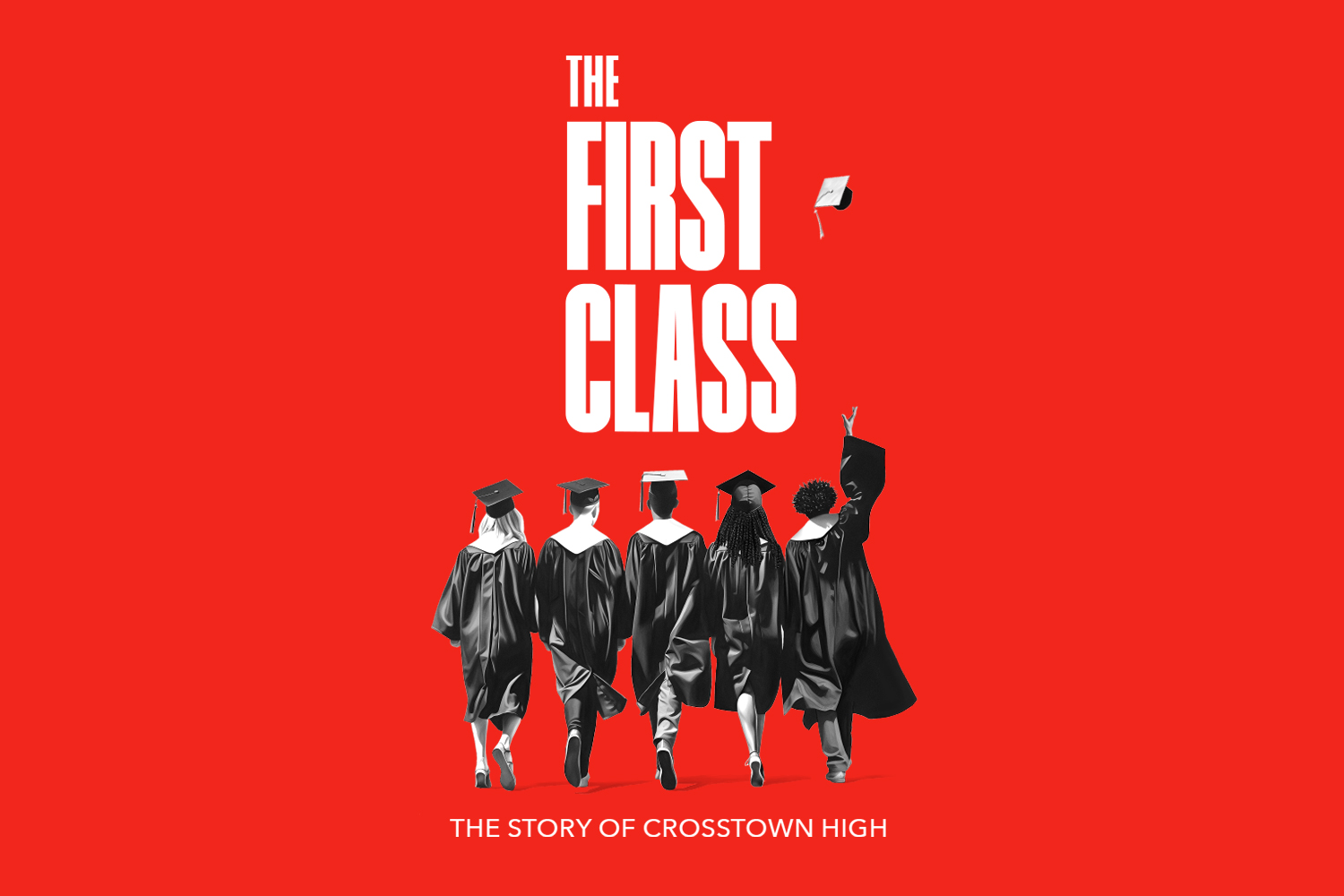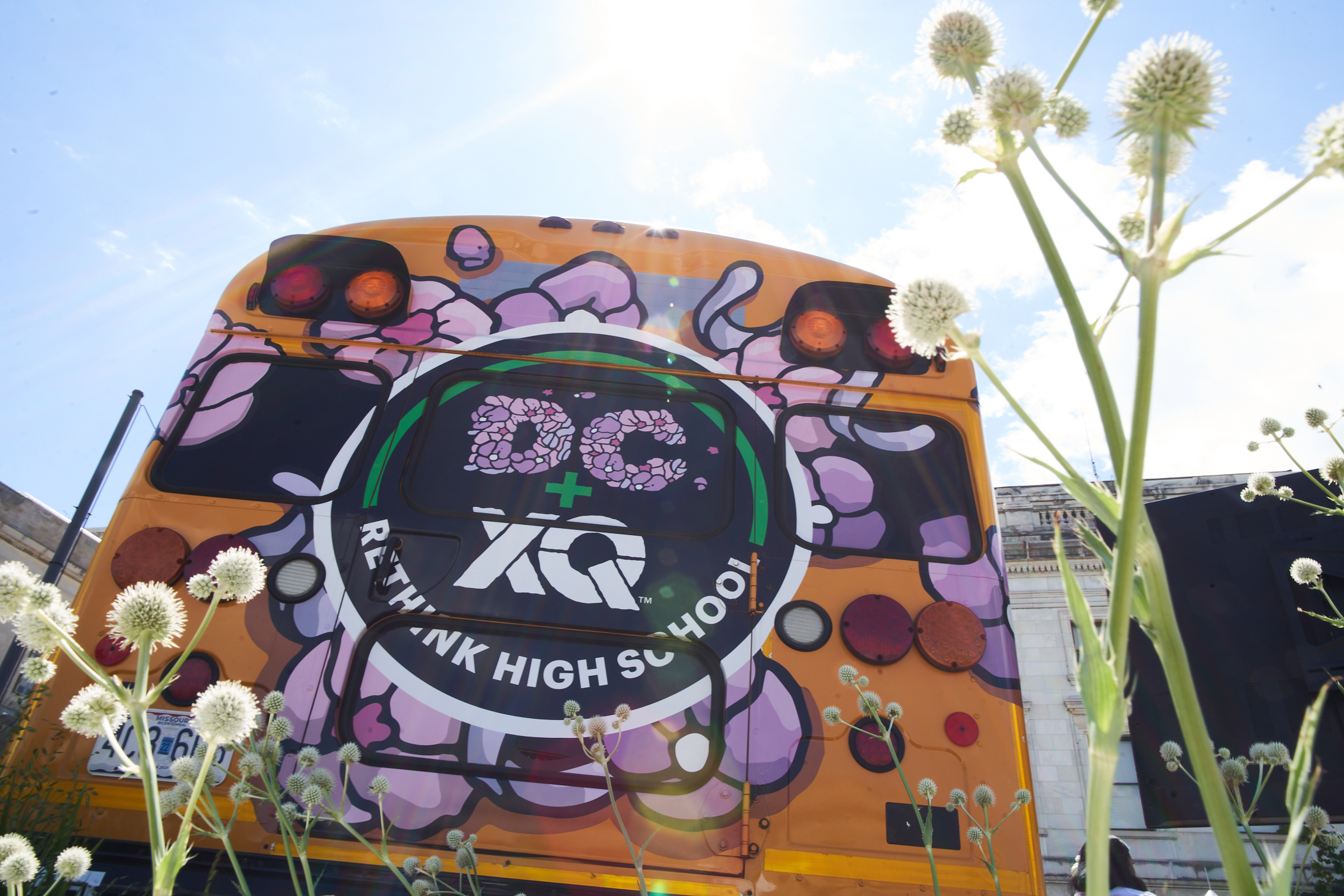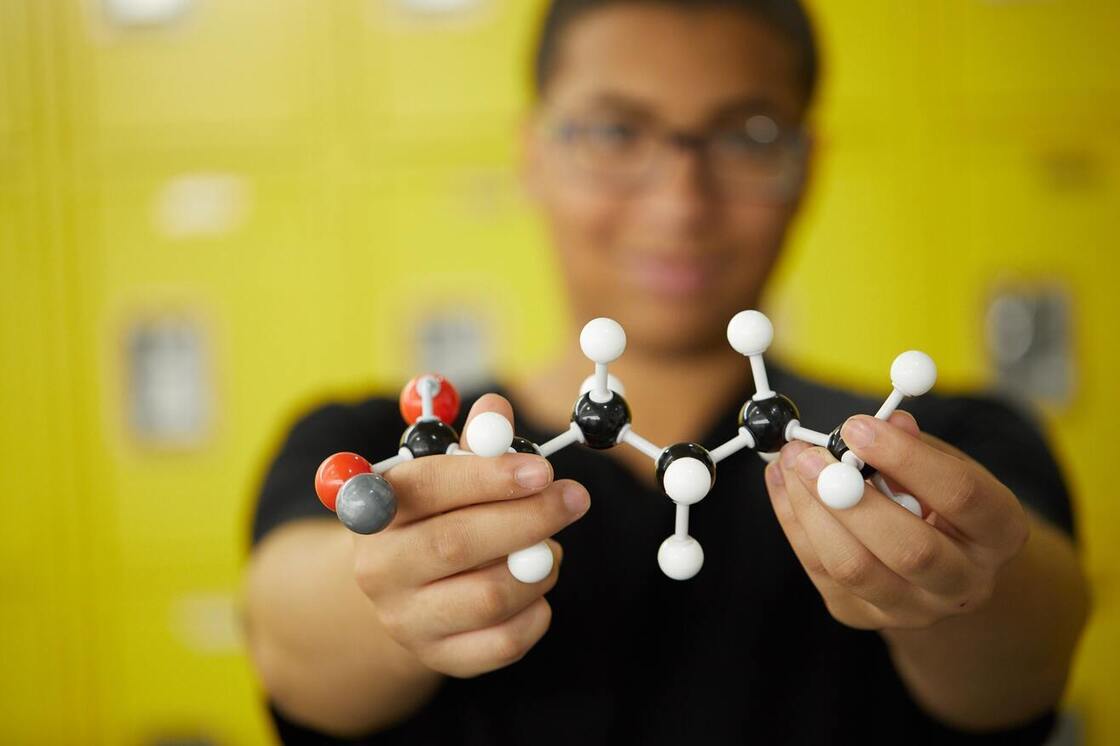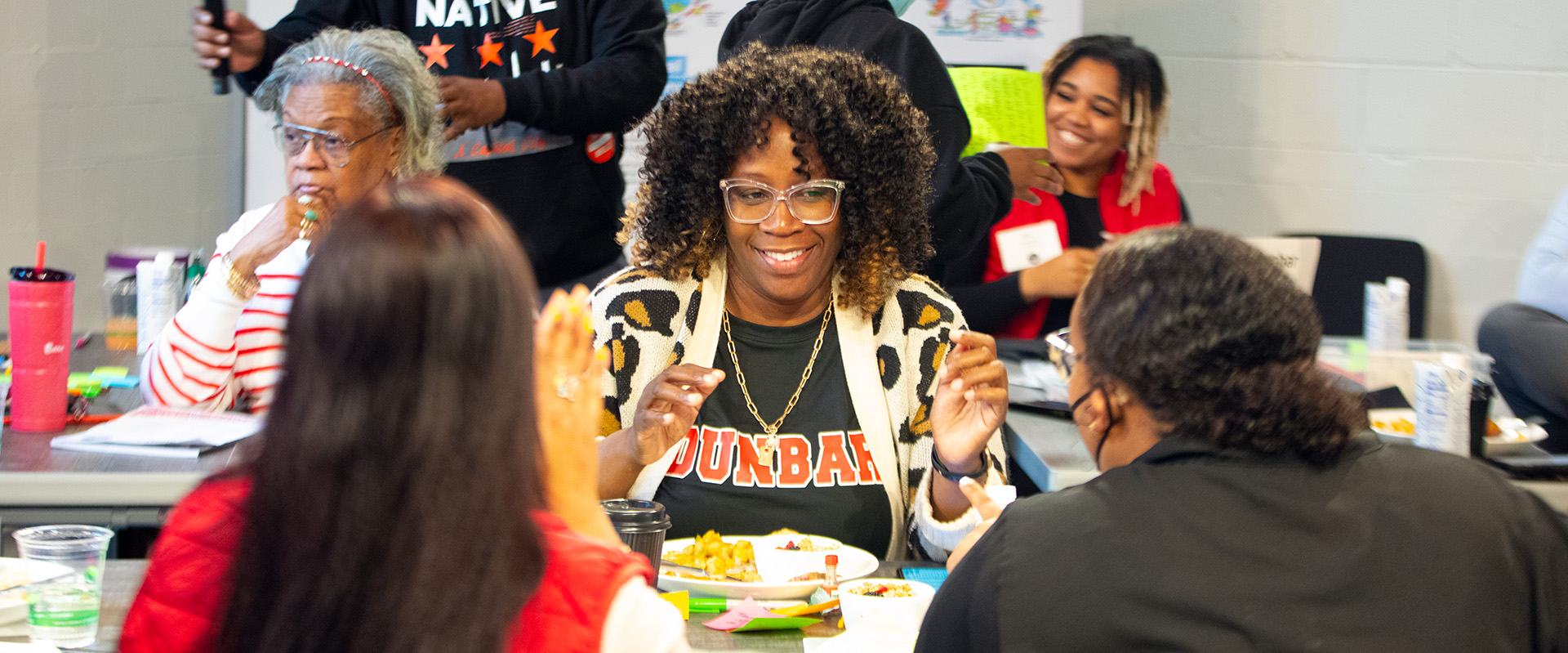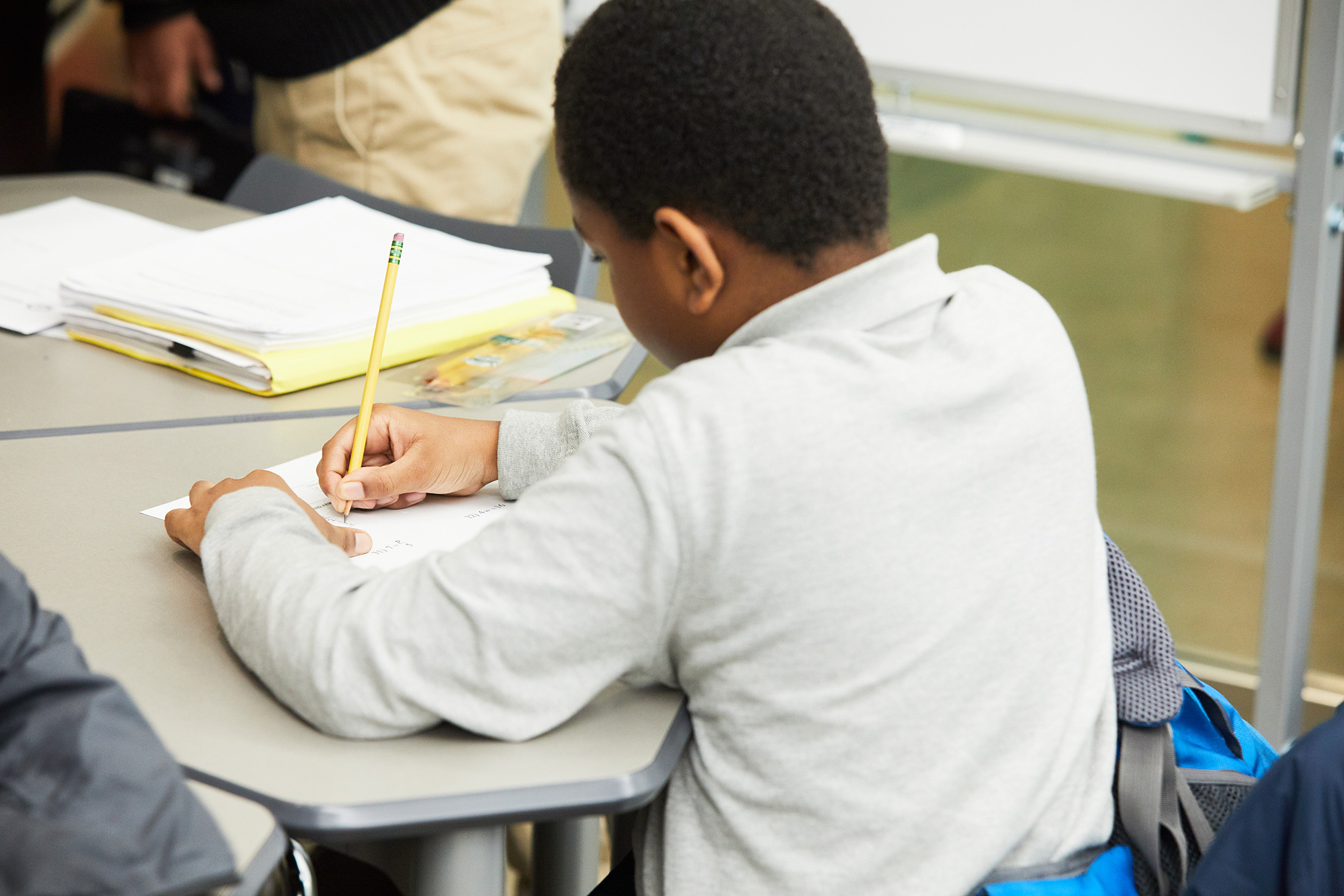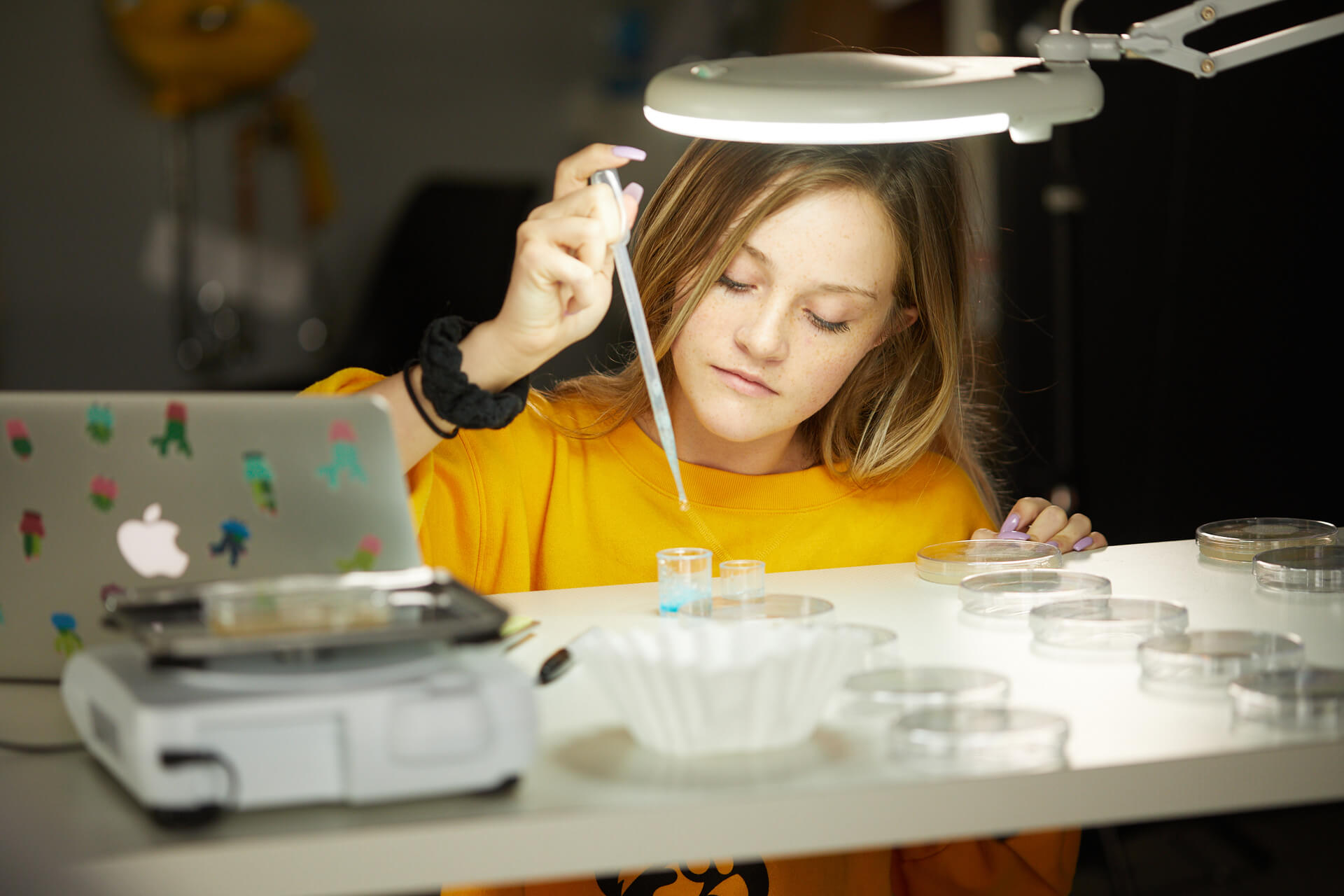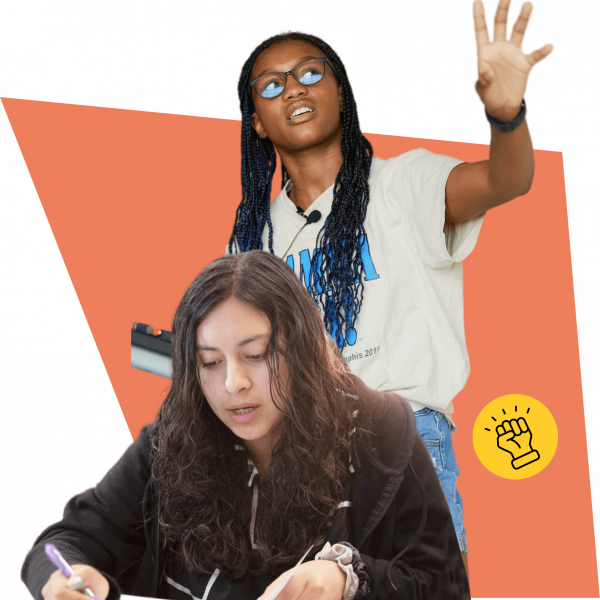School Reopening Resources, Tips, and Examples for Educators
Our collection of resources on high school reopenings with equity at the core.
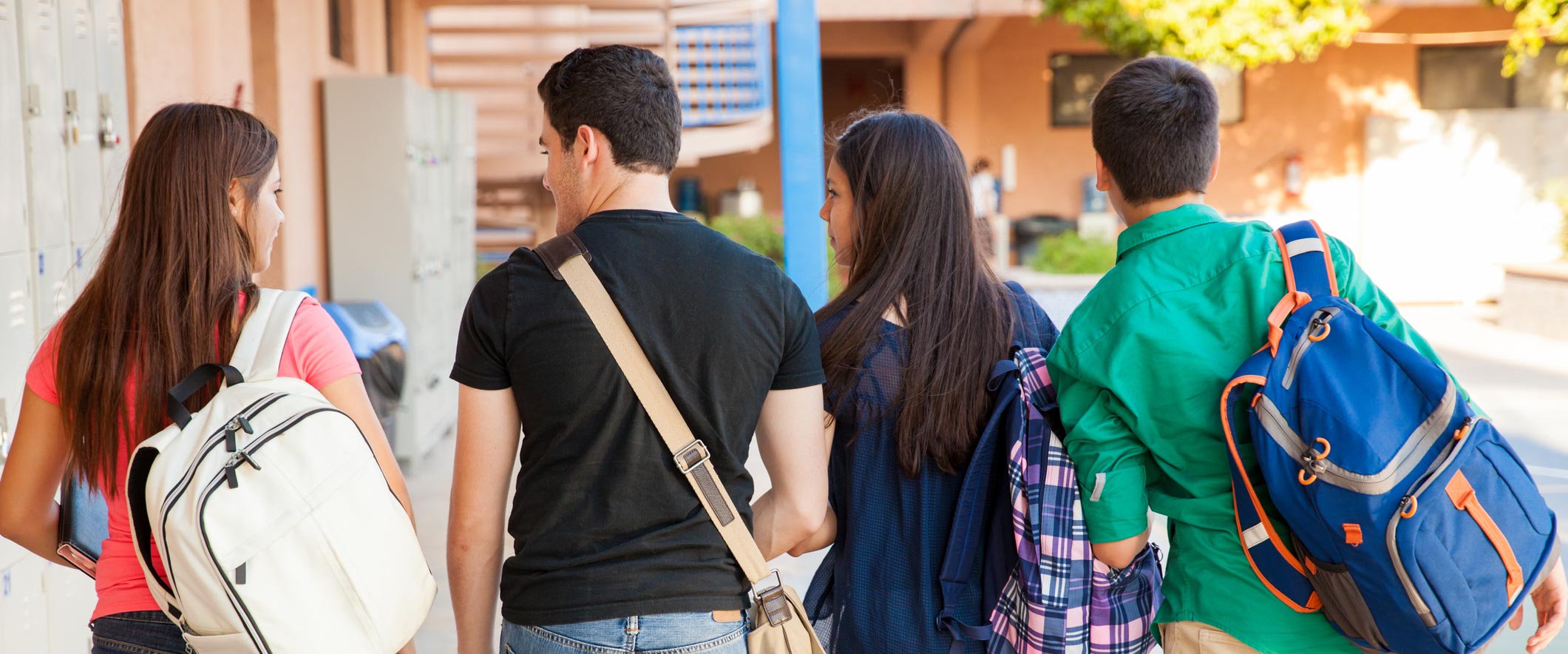
The fall brings with it a new school year. This year that school year is the most uncertain in history. COVID-19 and its economic and social ripplings have transformed how the American education system functions. The pandemic has further identified the cracks in our education system and the wear of hundreds of years of inequity and injustice. Inequalities are more clear than ever and stop-gap solutions won’t solve larger problems. Reopening schools over the next few months offer us the chance to rethink what high school can be.

In the words of Chris Hanks, principal of Grand Rapids Public Museum School, “The struggle in district settings had previously been how to get people excited about reinventing education, and now all of a sudden it’s not about getting people excited but rather facing that we must reinvent education right now.”
As schools make decisions to continue remote learning, reopen their school buildings, or work through a hybrid of the two, we want to make sure that all young people get the support they need. To pair with our collection of remote learning resources for educators, families, and students struggling with remote learning across the country, we’ve compiled resources on reopening high schools with equity at the core.
We remain energized by the innovation, ingenuity, and enthusiasm of schools and communities who worked tirelessly to address this new reality for their learners. And have continued to listen intently to educators, students, families, and communities as we move forward toward an uncertain fall with urgency, empathy, and humility.
Here are resources that we hope will guide you.
An XQ Tool to Strengthen Remote and Hybrid Learning
High schools across the country are using remote and hybrid learning to meet the needs of students, families, and educators in this challenging school year. To help, we developed a discussion and self-assessment tool that teachers, education leaders, and students can use together. It includes a set of discussion questions to explore what your school is doing now, what you might try, and what additional resources you might mobilize; and a self-assessment worksheet to create a plan to meet students’ needs better and more equitably. Be sure to check out our blog to learn more about how this tool relates to XQ’s design principles.
School Resources to Keep Equity at the Center of Reopening
Stay Focused on Equity
Brooklyn Laboratory High School, an XQ school based in Brooklyn, is exploring the challenges of centering equity in re-entry. Their Educating All Learners Alliance (EALA) coalition has launched a micro-website called Equity at the Corethat explores nine challenges of re-opening:
- Student Agency
- Equitable Systems
- Safe Structures
- Social-Emotional Learning & Trauma
- High-Quality Learning
- Family Partnership
- Professional Learning
- Finance & Governance
- Access & Tools
In addition, Brooklyn Laboratory has partnered with leading researchers from academic institutions like HGSE to outline three, inclusive, anti-racist mindsets for reopening schools:
- Committing to anti-racist, anti-ableist actions: Anti-racism and anti-ableism actively identify and eliminate racism and ableism by disrupting systems, structures, policies, practices, and attitudes.
- Combining anti-racist and anti-ableist practice: It’s important to combine anti-racist and anti-ableist practice and a good way to do this is by using frameworks like Universal Design for Learning and Culturally Responsive Teaching. This can support educators to shift from questions that focus on the student (“how are individuals disabled?”) to questions that consider the flaws in the system (“how are learning environments disabling”). By flipping the perspective and language of fault, educators can push to creating inclusive spaces by asking questions that proactively support the development of more inclusive, anti-racist and anti-ableist systems (“how can we design learning environments to enable?”).
- Learn from and with those students who are most marginalized by the current system. This does not mean identifying students as “problems,” which perpetuates systems that work best for the most advantaged students. Rather, this means identifying the failings of the current system and using empathy to redesign the system for those who are struggling under its weight.
Brooklyn Lab also created a Back to School Learner Identity and Agency Guidebook, which unpacks how to develop student identity to provide a more equitable and inclusive learning environment for all students. The guidebook compiled research and strategies from experts working to support equity in this work.
They’ve also created an Open Iconography Library—”visual components to clarify the back-to-school process , and to present information in a way that helps your community engage, weigh in, and ultimately help hold each other accountable.”
Similarly, Brooklyn Lab created a Success Coaching Playbook that outlines how adults can help students succeed in the 2020-2021 academic school year. The playbook includes research-based frameworks to build supports, protocols, and resources to help adults work with students.
Most importantly, Brooklyn Lab has created two resources on how to adapt school facilities to meet COVID-19 safety measures. The Public Schools Facilities Planning in the Era of COVID-19 and the Back-to-School Facilities Toolkit both outline the school’s efforts to adapt their physical infrastructure to school re-opening. Brooklyn Lab has met this moment so well, that they are featured in a New York Times article about the changing landscape of the city.
Be sure to check out a blog written by Brooklyn Lab about how they are creating meaningful options for all their students during reopening.
We’ve also created resources and written blogs to help educators commit more fully to an anti-racist agenda in their schools. From partnerships with the Center for Black Educator Development and companies working to decolonize history textbooks, here are a few of our favorite picks:
- The Anti-Racist Guide to New School Hires: “You can’t fire your way to building a great institution of learning. You have to hire and coach extremely well. But that does not mean you hold on to anyone whose values do not align with that of your school and the community you serve. And these values must be clear, pervasive, and protected.”
- It’s Time to Start Decolonizing America’s History Textbooks: “Educators are struggling to teach enough basic history for their students to survive a trivia night. But, we are also struggling to teach our students what happened, why it happened, and what resulted because of it.”
- A Teacher’s Journey to Culturally Responsive Teaching Practices: “I needed to reflect, learn, and unlearn the roots of my own education, calling out where the perspectives were homogeneous and pivoting to make sure I could answer questions and reveal a culturally appropriate, responsive, and reflective answer.”
- What Will School Meals Look Like With School Reopenings and COVID-19: “The COVID-19 outbreak and its economic ripplings meant that school meals became the only way many children could get the food they needed. With the job losses triggered by the pandemic, one in four children are estimated to be struggling with hunger, which means school meals will be more essential than ever, especially as the economic consequences of this pandemic grow.”
- Teachers: It’s Time to Graduate from Diversity and Move Closer to Inclusion and Equity: “This summer has forced me to redefine my personal definition of wokeness. And by redefining what it means to be woke, I’ve had to redefine what it means to empower students of color. In spaces that serve BIPOC students the markers and boundaries of what it means to empower our students have changed. We’ve had to readjust how we support our students and how we teach them new futures. We’ve had to rethink a system that codifies whiteness in its treatment of our students of color—by sidelining their voices, bodies, and minds.”
Think Ahead with MIT’s Justin Reich
XQ’s Rethink Together Forum provides a home for cutting-edge thinking about issues of school design, educational innovation, and educational justice. And as educators around the country think about COVID-19 and school closures, we created content about what to expect as schools reopen. This video features XQ’s Meg Stephens and her conversation with MIT professor Justin Reich. They talk about things schools, districts, and states can do right now to prepare for the fall in a way that meets the needs of all, not just some, students. From Justin Reich’s highlight reel:
- “We need to figure out how we support parents, caregivers, communities, siblings, tutors, and other kinds of people. If we know kids are not going to spend a full year at school next year, we are going to have to figure out how to ramp up all of these people to be able to support folks at home. So that’s a big conceptual shift we need to wrap our heads around. How do we support in a way that we’ve never had to before school-family partnerships that really empower families to be successful in supporting learning?”
- “There are going to be a lot of kids that come back and we can’t define them by the things they missed. We have to be attentive to the things they missed because some of those gaps are real and they are going to be meaningful for kids’ lives, but we just have to constantly remember that students thrive when we help them identify their strengths. There’s a lot of kids who probably don’t realize how much they are learning or how much they are accomplishing right now—part of our job as educators is to find that and celebrate that.”
Curated Collection: High-Quality Remote Instruction
A great resource that many principles and district leaders have found helpful is Transcend’s Curated Collection: High-Quality Remote Instruction. The booklet collected resources on specific practices on remote learning and shares examples to help create learning environments that are engaging and equitable. From the introduction: “As schools continue to respond to the COVID-19 pandemic and consider ways to reinvent themselves, these instructional practices should be at the center of the process and district and school leaders should work to design learning environments that support and enable them.”
Implementing Remote Teaching & Learning
From the Learning Accelerator comes research released guidance on quality remote instruction. The guidance stems from Learning Accelerator’s work with districts across the country. Resources include research findings on the factors that drive quality of remote learning, an educator-facing series on how best to implement remote learning, a guide and diagnostic tool for leaders on how to support remote learning, and three “grab-and-go” sessions to train your team on remote instruction.
Move Schools Forward
The Move Schools Forward Campaign calls for critical measures that demand a just future for our education system. These measures include ensuring student representation on all decision-making bodies, closing the digital divide, and moving away from “one-size-fits-all instructional and evaluation methods.”
Additionally, the Move Schools Forward Campaign calls for schools to make a full commitment to decentering whiteness in curriculum and equipping students to be “critical civic actors.” Their 10 guiding principles carry the endorsement of student organizations across the nation like:
As we re-open, it’s imperative to incorporate these recommendations into your school and district’s plans.
Examples for Reopening Schools Across the Country
Reopening is an incredibly complex proposition. It implicates the remote learning issues of the digital divide, challenges teachers to deliver instruction in a remote modality, and disrupts traditional social-emotional learning supports. Additionally, the question of reopening includes a need to think about physical infrastructure and transportation as well as necessary processes like school meals. Many school districts are planning to phase reopening: a few weeks of remote instruction to start, then a hybrid model through the rest of the fall, with the hope that buildings can fully reopen in the spring.
Here’s a look at how schools across the country are approaching the new school year.
Two XQ schools, Vista High School and New Harmony High have decided to implement a completely virtual model for an undetermined amount of time into the school year.
At Latitude High School, an XQ school in Oakland, there is a continuous, internal faculty debate around how to center equity during reopening. Many Latitude students are DREAMers—young undocumented immigrants who were brought to the U.S. as children—so the school is thinking very carefully about what remote and hybrid models mean for them, and how the risks of COVID-19 impact undocumented families in particular.
Additionally, the school has opened space to discuss the social-emotional well-being of both staff and students in daily meetings with the use of dialogical interviews and different team configurations for connection and collaboration. Having these adult debates about the deep social-emotional work ahead, while also addressing the needs of marginalized students, allows Latitude to proactively ensure they are creating a solid foundation for the needs of students who may be struggling with unstable home environments. Next year, they plan to rework their advisory structure to mix rising 11th graders with incoming 9th graders to create peer-to-peer supports.
Círculos, an XQ school located in Santa Ana, CA, has intentionally designed an advisory system with a “primary person” model—an approach to advisory systems that ensures that all students have a trusted adult invested in their success. This model also creates a safe and much-needed environment for sharing and encourages vulnerability and openness. In the shift to remote learning, the Círculos team has come to realize that many of their students did not have access to the internet. In response to this, the team flexed around the pandemic by hand-delivering hot spots to their students and assigning a primary person to flexibly check-in with their students.
The Rhode Island Department of Education asked Local Educational Authorities (LEAs) to submit multiple plans for various scenarios in July. The state offered a template that LEAs across the state used. Other LEAs supplemented with outside resources, such as this Physical Health and Safety planning document created by Transcend.
New York City’s Department of Education has developed multiple hybrid scenarios among which schools will choose. However, the Department of Education is also giving parents the option to choose full remote learning this school year. They have created a reopening-specific website with information on NYCDOE’s Guiding Principles, the reopening planning process, and ways for families to learn more and engage in the discussion.
Monterey Peninsula School District in California developed and shared return-to-school preparations in response to COVID-19. As part of The Learning Accelerator’s Strategy Lab cohort the district has tried various communication practices to stay connected with families during COVID-19 and has planned for long-term sustainable change. Check out this Ed Surge article to learn more about how this school district is maintaining relationships with their community.
Resources to Rethink Space & Time for Optimal Teaching and Learning
Equity by Design: Instructional Program Scheduling Map
Brooklyn Laboratory’s scheduling map takes into account new health and safety requirements. It includes staff scheduling, class configurations, and planning considerations for general education and specialized settings, like those for special education such as ICT classrooms. It also explores the use of innovative human capital solutions such as the use of community educators and success coaches to support social-emotional learning for students. Be sure to check out the full Equity by Design Back to School Toolkit.
Summit Public School’s Virtual School Strategy
Summit Public Schools designed and launched a Virtual School that enables teachers to bring their project-based, self-directed, mentor-supported learning model fully online when faced with building closures. COVID-19 Spring 2020: Recounting, Reflecting & Lessons for the Fall, describes Summit’s response to COVID-19 and school building closures, highlights conditions that enabled success, and articulates lessons learned and implications for this academic school year.
School for Health: Mitigation Strategies for Reopening Schools
Schools for Health: Mitigation Strategies for Reopening Schools, released by Harvard’s School of Public Health, enumerates policies and approaches—as well as handy checklists—that go beyond safety and truly reimagines classrooms, buildings, policies, schedules, and activities.
The Parabola Project
Created by The Learning Accelerator and Ariadne Lab, based on expertise from both the education and health communities, the Parabola Project aims to minimize health risks to students, staff, and teachers while maximizing learning for all students—with a focus on the safety, well-being, and equitable learning of school communities. The initial resources are available and free to use, including:
- School Reopening Readiness Guide: This evidence-informed guide is intended to assist district and school leaders in developing, evaluating, and executing operational plans for reopening schools, as well as in assessing readiness to implement these plans.
- Practitioner Toolkit: How to Build a Mask Culture: This resource aims to help educators consider how to best help students adjust to and sustain mask-wearing.
- Practitioner Toolkit: Learning Together In Socially Distanced Classrooms: This resource aims to help educators consider how to support small-group, collaborative, and one-to-one learning while physically distancing.
- Practitioner Toolkit: Communicating about Reopening Measures with Families: This toolkit provides principals and district leaders insights on how to effectively communicate to families about their fall plans.
- School Air Quality Assessment Guide: This guide provides district and building operations and facilities leaders a checklist of priority considerations related to improving air quality to prepare for in-person school reopening.
- How to Prepare and Care for Your Classroom Checklists. The first of these tools help teachers prepare their classrooms for in-person instruction, taking into account cleaning and distancing principles. The second tool provides a daily guidance checklist identifying which items need to be cleaned regularly and the frequency of cleaning.
Addressing the Physical Aspects of Reopening
The Parabola Project has been hard at work this fall and came up with a few additional resources to help schools reopen safely. These resources focus on the physical aspects of COVID-19 and attempts to add safety to your regular school protocols during this pandemic:
- Step-by-Step Options for Serving Meals: Students across the country are at risk of going hungry during school closures. Luckily, the Parabola Project created a step-by-step guide to help schools understand how to inform their meal protocols for serving and eating meals while following public health strategies to limit the spread of COVID-19.
- Bus Driver Support Tool: This tool supports bus drivers in their day-to-day trips and in providing a safe environment for students to travel to school and includes elements related to masks, cleaning and disinfecting, monitoring for symptoms, and what to expect if there is a positive case.
- Process for a Positive COVID-19 Case Among Staff/Student(s). This tool provides a protocol for schools to follow if a student or staff member tests positive for COVID-19.
- Indicators to Support School Closures & Reopening. If you are trying to decide if and when to close or reopen a classroom, this tool provides indicators for school officials to monitor with their local health departments.
- School Air Quality Assessment Guide. Here’s a guide that provides district and building operations and facilities leaders a checklist of priority considerations related to improving air quality to prepare for in-person school reopening.
- Additionally, here is another checklist on How to Prepare and Care for Your Classroom. This two-part tool helps teachers prepare their classrooms for in-person instruction, taking into account cleaning and distancing principles and providing guidance on which items need to be cleaned regularly and the frequency of cleaning.
Johns Hopkins Reopening Schools Tracker
The Johns Hopkins Reopening Schools Tracker not only tracks the plans of schools and districts across the country but also includes an explanation of the twelve areas they consider critical for reopening readiness.
Improving the Quality of Distance and Blended Learning
EdResearch for Recovery released a brief aiming at providing K-12 education decision-makers and advocates with evidence to ground discussions about how to best serve students during and following the novel coronavirus pandemic.
Resources to Help Schools Communicate with Families
It’s more important now—than ever before—to communicate clearly, proactively, and directly with the families and students that your school serves. For instance, XQ schools across the country have continued to increase their overall communication with families and parents to bring them in as partners in their student’s learning.
Since the start of the transition to shelter-in-place, Purdue Polytechnic High School didn’t know what to expect as far as family engagement but school administrators were surprised by the high turn-out at their first virtual parent night. Principals at both sites gave high-level overviews of how the schools looked, explained best practices for working at home, and answered parent submitted questions. “We try our best,” says Charli Renckly-DeWhitt, Communications Manager at PPHS. “In this time, what would help would be more information, not less.”
Here are other creative ways that XQ schools are connecting with families:
- Elizabethton High School developed an app to help the school stay connected to families. The app allows families to seamlessly keep track of resources, newsletters, events, and notifications.
- Círculos widened their student circles to parent circles with regular meetings to help the school communicate with parents and families on a consistent basis. Every Monday, the Círculos team connects with parents to provide a weekly briefing, give updates around operational items, share highlights of the week, offer space for Q&A, and communicate any important action items that parents can take to engage in their students’ learning.
- Latitude High School has held town halls for families in English and Spanish to explain the reopening schedule. Recently, they communicated that every incoming ninth-grader will have one-to-one orientations with their advisors, and provided a direct number for families to call with any questions that they might have.
- PSI High created a number of Tinyurl webpages for their families to stay in touch and receive information and updates. A single source of information allows their families to understand details about school orientation including how to use their new online platform and where they can pick up their devices.
- Safety created a guide to help students stay safe during school reopening. The guide covers the basic COVID-19 guidelines, but also offers tips for high school and college students heading back to school.
- Family Engagement Resources: Our friends at Learning Heroes developed a 3-step Parent-Teacher Planning Tool to help teachers share the beginning of year benchmark data and work with parents and students to create a learning plan and include a teacher guide.
Focus on Trauma-Informed Practices and Social-Emotional Learning
Across the nation, schools are working out how to support educators to implement student Individualized Education Programs (IEPs) in previously uncharted territory, drafting the rules as they go. Early evidence suggests that 40% of parents of children with special education needs are concerned about their children’s mental health, and a longitudinal study of families during the pandemic reports a 67% increase in the number of parents who reported feeling anxious or depressed all day, alongside a 42% increase in their children’s externalizing behaviors. Its hard to expect students to maximize student engagement, when they are dealing with their mental health. We’ve rounded up some of these best resources on social-emotional learning and how to center that during school reopening:
- New Schools Venture Fund’s recent brief: How to Meet Students’ Social-Emotional and Academic Needs When Schools Reopen provides a framework based on four critical social-emotional needs that have a strong correlation to academic outcomes. The briefing provides real-world planning questions that schools can use to ensure that reopening plans are accounting for critical student social-emotional needs in any reopening plan.
- Brooklyn Laboratory has committed to asking themselves: How can we help our school community integrate social-emotional and trauma-informed approaches to learning? They have organized a companion of articles on their micro-site, curating resources from Facilitating SEL in Different Learning Environments to Supporting Individuals With Autism Through Uncertain Times and School Reopening Toolkit: Counseling.
- During the beginning of school closures, XQ’s managing director of data, policy, and research—Dr. Lauren Bierbaum—wrote a comprehensive dive into social-emotional learning and its heightened importance during COVID-19.
- Gabrielle Rappolt-Schilctmann makes suggestions on how social-emotional learning can help special educators address remote learning requirements. Among her suggestions: adopting a challenge-centered mindset, prioritizing units and lessons that support students’ social-emotional health and well-being, and recognizing the intersectional needs of all learners.
- CASEL’s COVID initiative also offers a plethora of resources and guidance on social-emotional learning as well as weekly webinars featuring experts. CASEL CEO and president, Karen Niemi, reminds us that “when physical distancing is deemed necessary, social and emotional connectedness is even more critical.”
Preparing for an Uncertain Future
2020 has been a year of crisis, forcing each of us to respond to intersecting and compounding challenges. If we’ve learned anything it’s that no one can be fully prepared for the future, but we can use the lessons from 2020 to emerge stronger and more resilient to future challenges.
- Education Policy Issues for the COVID-19 Era: Policy Actions and Responses to Leverage the Moment for Future Readiness
- The Aurora Institute recently published a report that offers “strategic guidance on how to harness our current opportunity to transform K-12 education.” Additionally, the report offers insights and recommendations on critical issues in the education field at the moment. Check out the report to learn more!
- Beyond reopening schools: How education can emerge stronger than before COVID-19
- The Brookings Institute published a report that looks at the importance of public schools as anchoring institutions for communities as brought to light by the COVID-19 pandemic. The paper argues “that a strong and inclusive public education system is essential to the short- and long-term recovery of society and that there is an opportunity to leapfrog toward powered-up schools.”
Share Lessons with Other Schools
Given the unprecedented nature of this moment, no one school can or will be a beacon guiding us through reopening. No school can do it perfectly. However, we know that we are best when we work together, learn from each other, and collaborate on best practices. Given the need for open communication and shared resources at this time, XQ has worked tirelessly to create shared pages and resources. In this post, we’ve highlighted different approaches to reopening schools and presented—albeit incredibly densely—resources and ideas to help schools across the country pick-and-choose how reopening will look for their communities.
Remember, reopening high school challenges our core preconceptions about school design and structure. It asks us to rethink what’s possible and pivot to a more inclusive future. Perhaps, XQ’s Jennifer Ellis put it best in her reopening blog: “The COVID-19 pandemic served as a pressure test on our education system—the crisis exacerbated inequalities; wholly disrupted the lives of educators, students, and families; and upended the very notion of what counts as ‘school’—making it clear that the system, as it exists now, cannot hold.”
Reopening after a shock to the education system is no easy feat—and no one can offer a clear guideline about what works best for your school and the community that you serve. All we can suggest is to remain resilient, adaptive, and collaborative during this time. And know that your supporters at XQ are here to help.
Did you find this information helpful? Do you want more resources on reopening and school design? Be sure to sign upfor Give Me Five and get bi-weekly resources on reopening, school design, and equity straight to your inbox. And as always we want to hear how you and your school is getting it done. Pitch us your stories at [email protected] and tell us what you are learning about during reopening.
Calling all educators! We started a new community on Instagram highlighting the voices, learnings, and bright spots from teachers across the country. Check out @BestOfTeachers on Instagram!

